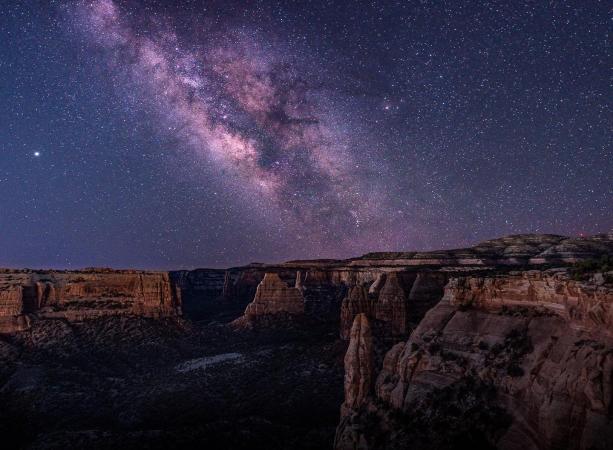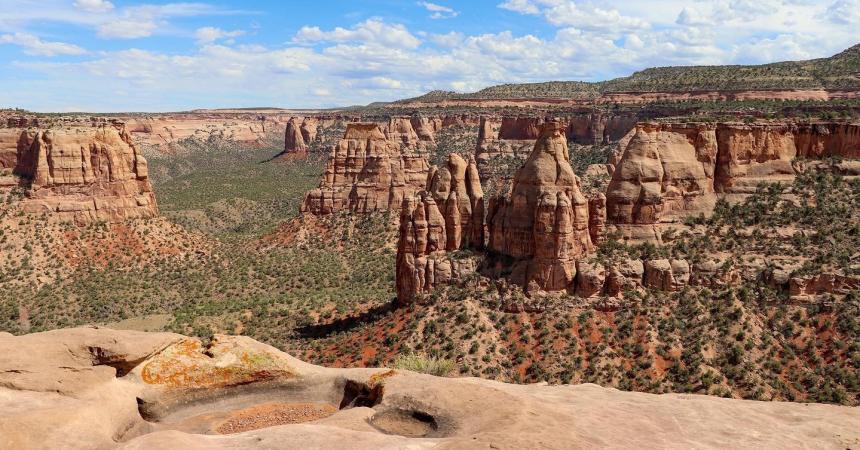When people think of Grand Junction, they tend to conjure up images of mountain biking, canyon hiking, and rock-climbing excursions. Yet for those interested in an out-of-this-world experience, there’s a reason to venture outdoors after dark. Celestial bodies can be seen year-round in Grand Junction’s night sky. You just need to know when and where to look. Explore the different types of celestial bodies and where you can locate them while stargazing in Grand Junction.
Celestial Bodies Meaning
Celestial bodies or astronomical bodies - also sometimes referred to as heavenly bodies - are various objects in space. Asteroids, stars, planets, satellites, comets, meteors, and galaxies are all considered celestial bodies.
Although many aren’t observable by the naked eye, eager stargazers can find dazzling galaxies and colorful planets with the help of a telescope or binoculars. Don’t have either on hand? No need to worry. You can buy or rent one in Grand Junction from the Grand Mesa Observatory on your way to check out the galactic views. Because of Grand Junction’s remote, natural location, you might even be able to spot some with a keen eye and some patience.
What are the Celestial Bodies?
Colorado Stargazing
While stars may look like twinkling specks in the night sky, in reality, they’re scorching fireballs of gas. These gas orbs produce energy that create light. The hotter the star, the more white or blue it will look while cooler stars often appear red or orange. If you’re a first-time stargazer, Sirius is great to start with because it is the brightest star in Earth’s night sky, making it one of the easiest to locate.
Visible Planets
The Milky Way Galaxy includes eight planets, but there has been a new classification regarding Pluto, which was deemed a dwarf planet in 2006. Do you know why Earth and Mars are considered planets, and Pluto no longer is? Based on the 2006 findings, planets must do three things. First, planets must orbit a star and in the galaxy, that star is the sun. Second, it must be large enough to have the gravity needed to create a spherical shape. Third, it must be so large that its gravity forces all objects similar in size out of its path of orbit around the sun. Pluto wasn’t large enough to clear objects out of its orbit, making it a dwarf planet. Despite being small, skilled observers can still spot Pluto on clear nights with a large aperture telescope even though it is smaller than Earth’s moon and 3.3 billion miles away.
Orbiting Satellites
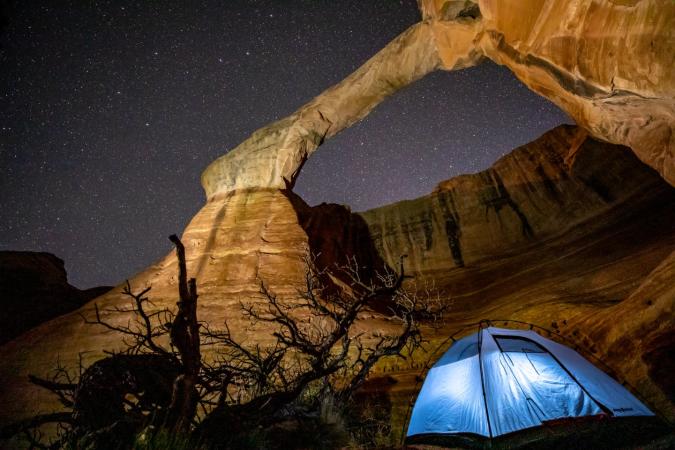
Satellites are objects that orbit planets. There are two types of satellites: natural (like moons orbiting planets) and artificial (like the Hubble Space Telescope). Since almost every planet has satellites, there are plenty of opportunities to spot them while exploring the night sky. The most recognizable and easiest to spot is obviously Earth’s moon. If you want to challenge your satellite spotting skills, head outside right before dawn or after dusk. The International Space Station is one of the more famous satellites and NASA has provided a handy tool to find it while searching for celestial bodies.
Comets in the Sky Over GJ
Comets are chunks of ice and rock left over from the formation of solar systems. As these frozen balls orbit closer to the sun, their ice melts, creating a captivating tail behind them. Comets are often very faint, and most require a telescope to view. However, on rare occasions, stargazers can spot particularly bright comets with binoculars.
Asteroids in Space

Asteroids are small space rocks made of minerals and metals that orbit the sun. While there are many asteroids in the solar system, most of them are found in the asteroid belt between Jupiter and Mars. With the naked eye, most asteroids just look like stars. However, with the help of a telescope, you may be able to distinguish between a star and an asteroid.
Meteors and Meteorites
If you’ve ever seen a shooting star race across the night sky, you’re actually not seeing a star at all - you are seeing a meteor. Meteors create streaks across the atmosphere, making it appear as if a star is racing through the galaxy. Some meteors are large enough to reach Earth and create an indent called a crater. Once a meteor makes its way to Earth’s surface, it’s known as a meteorite. Since they are best observed without a telescope, spotting one is easy for beginning astronomers who are patient enough to wait around for the show. However, for city dwellers, this is virtually impossible because of light pollution. Thankfully, Grand Junction is far enough away from any major cities, which makes the night skies prime for catching a glimpse of a meteor. You can find out when the next big meteor shower is by clicking here.
Galaxies Visible from Earth

Galaxies are vast groups of stars, dust, and gas held together by gravity. The sun, the solar system, and the planets are all part of a galaxy known as The Milky Way. Although difficult to fathom, there are thousands of galaxies outside of it. On dark, moonless nights, onlookers can spot the spiral-shaped Andromeda Galaxy without a telescope, between the Cassiopeia constellation and the star Alpheratz. For more helpful tips on finding the Andromeda Galaxy, check out this helpful article.
Best Times of the Year to See Celestial Bodies
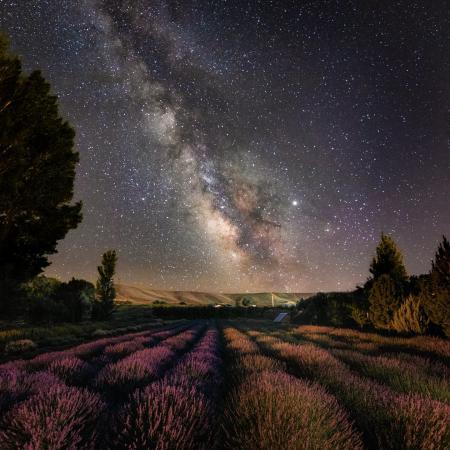
If you’re hoping to view celestial bodies during your visit to Grand Junction, knowing when to go will impact how much you can see. Astronomers recommend looking to the sky when it’s at its darkest. These are typically the nights leading up to and during a new moon. A new moon is essentially the opposite of a full moon. Since the light from the moon isn’t obstructing the sky, more celestial bodies will be visible to the naked eye.
Autumn, winter, and spring are the best times to seek out great space views. This time frame is often referred to as the “observing season” by experts. During the fall, the nights get longer until the beginning of spring. This provides ample opportunity to get outside and observe the night sky. It’s a bit trickier to spot celestial bodies during the summer because this is when the night sky is at its brightest. As the weather warms, twilight and dusk grow longer, blocking the night sky with light from the sun.
Best Places to Look for Celestial Bodies in Grand Junction
Grand Mesa Observatory
In the modern world, it’s hard to find a clear sky that isn’t contaminated with city light. This can make it challenging for folks to find a place to view the stars. The Grand Mesa Observatory is a nonprofit educational facility that was founded with the idea that dark skies should be easily accessible to all. Located just 45 minutes from Grand Junction, the Observatory has a 2500-square-foot observing platform available for rent, including astronomy gear, in case you don’t have your own telescope.
Colorado National Monument
Right outside of Grand Junction is the breathtaking Colorado National Monument, often compared to the Grand Canyon. While it’s best known for its red rock canyons, enormous spires, and panoramic views, it’s also a magnificent place to escape the city light and explore the night sky. For stargazers wanting to get the full experience, you can book a campsite at Saddlehorn Campground. Campsites at Loop A are available year-round, while campsites at Loop B are open Mid-March to Mid-October.
Miracle Rock
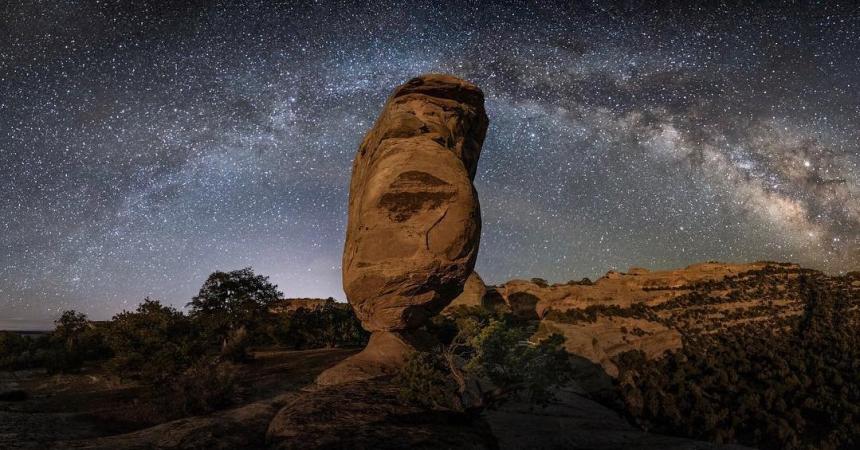
Tucked behind the Colorado National Monument is one of Colorado’s hidden gems, Miracle Rock. This 84-foot-tall boulder looks as if it could topple over at any second—don’t worry, it’s not expected to fall any time soon. This unique site sparks imagination in viewers, and this image only intensifies with a starry night backdrop. When visiting Miracle Rock at night, be sure to pack a flashlight since there’s a one-mile hike to the rock’s location.
Out of This World Views in Grand Junction’s Backyard
Grand Junction is surrounded by beautiful remote locations that provide awe-inspiring views of space. Check out more ideas for your trip to Grand Junction in the Official Grand Junction Visitor Guide.
Photos By:
@conradearnest, @kaitlyn711, @handforgedphotography, Michael Charmick, Alex Murphy, Steve Traudt, @Ryan Riesterer, @peachwoodproductions1, @dekalb913, @q4pphotography



